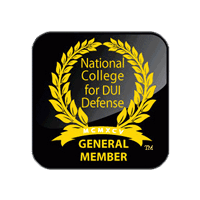Let’s be honest. Each of us has an opinion and is biased one way or the other. Consequently, jury prejudice must be confronted and neutralized. But how do we do that? We explain one approach below.
 DWI Trial Options in Mecklenburg County
DWI Trial Options in Mecklenburg County
In North Carolina, there is no plea bargaining in DWI cases. Rather, prosecutors may dismiss ancillary charges like speeding. But otherwise, it is “DWI or die.” If you decide to take your case to trial, you have two options. First, there is District Court where a judge decides your guilt or innocence. Or, you can appeal to Superior Court for a jury trial. In our experience, judges are best for deciding legal motions. However, for trials on the merits, we prefer a jury. Because everyone has individual bias, the group dynamic of a jury is better. Why? Because we can minimize individual jury prejudice through voir dire and group pressure. In the end, everyone wants to be fair. Or at least perceived as fair. We can work with those individuals as we seek fairness for our clients.
Jury Prejudice in DUI Trials
First, our Charlotte DUI attorneys are huge fans of David Ball, Ph.D. Dr. Ball revolutionized the way plaintiff’s lawyers try civil cases in this age of “tort reform.” While no lawyer wants to be an “ambulance chaser,” cheesy tv ads and billboards make all personal injury attorneys look bad. Certainly, insurance companies paint all lawyers with a broad brush. However, ads with “lottery” testimonials by individuals minimally injured did even more damage to our reputations. As a result, plaintiff’s lawyers and their clients walk into court tainted. So how do you deal with those stereotypes? By only presenting facts that allow the jury to connect their own dots. In the end, we trust our own conclusions. Don’t tell us what to think. Let us figure it out for ourselves. Now, Dr. Ball has written a new book applying similar principles to criminal defense cases.
In basic terms, “reasonable doubt” is any doubt based on logic. And the size of doubt does not matter. He uses the Tylenol scare of 1982 to demonstrate how the small risk changed an entire industry. Was the industry change reasonable in proportion to the small risk? Perhaps. But it was logical. Hence, it is the same with reasonable doubt in criminal cases. Given the specialized nature of DWI cases, I hope Dr. Ball one day writes a book specifically for our field. For now, we extrapolate his principles to DWI trials.
Jury Psychology in DUI Cases
Because DUI accidents get so much press, there is tremendous bias against anyone who drinks and drives. In fact, many jurors falsely believe it is illegal to drink and drive. After all, that’s what the billboards tell us. When asked about the 0.08 “legal limit,” jurors seem confused. That’s understandable. There is a lot of conflicting information. One billboard tells us not to “drink and drive.” Another billboard reminds us to always “drink responsibly.” And the law says we can drink and drive but not drive while impaired (DWI). At trial, you cannot ask the jury to “put themselves in the defendant’s shoes.” However, it is permissible to ask the jury to give your client the same attention they would want. And frankly should expect.
 We strongly believe in juries and respect their hard work. Of course, no one wants truly “drunk” or “impaired” drivers on the road. That’s the basis of jury prejudice. However, jurors also want to be fair to anyone accused of a serious crime. Even though we have to prove nothing, we must show the State’s case cannot rule out possibilities. And where the State cannot rule out a possibility, there is reasonable doubt. One juror’s reasonable doubt can force the State to retry or negotiate. Either way, your client deserves their day in court and a fair trial. Our job and privilege is to make sure they get it and hold the State to that standard. And that’s just what we do for our clients. Call us today.
We strongly believe in juries and respect their hard work. Of course, no one wants truly “drunk” or “impaired” drivers on the road. That’s the basis of jury prejudice. However, jurors also want to be fair to anyone accused of a serious crime. Even though we have to prove nothing, we must show the State’s case cannot rule out possibilities. And where the State cannot rule out a possibility, there is reasonable doubt. One juror’s reasonable doubt can force the State to retry or negotiate. Either way, your client deserves their day in court and a fair trial. Our job and privilege is to make sure they get it and hold the State to that standard. And that’s just what we do for our clients. Call us today.
*Our support for the National College for DUI Defense shows our commitment to fighting DUI cases.
